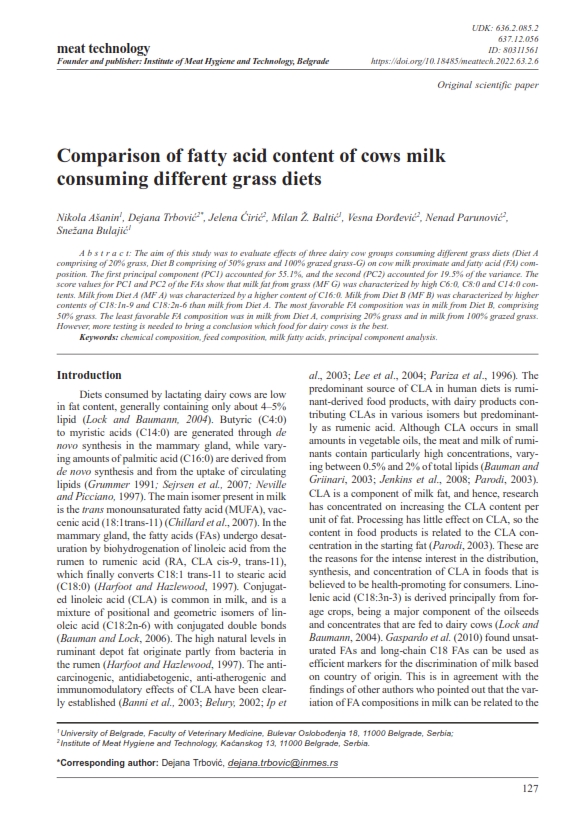Comparison of fatty acid content of cows milk consuming different grass diets
Abstract
The aim of this study was to evaluate effects of three dairy cow groups consuming different grass diets (Diet A comprising of 20% grass, Diet B comprising of 50% grass and 100% grazed grass-G) on cow milk proximate and fatty acid (FA) composition. The first principal component (PC1) accounted for 55.1%, and the second (PC2) accounted for 19.5% of the variance. The score values for PC1 and PC2 of the FAs show that milk fat from grass (MF G) was characterized by high C6:0, C8:0 and C14:0 contents. Milk from Diet A (MF A) was characterized by a higher content of C16:0. Milk from Diet B (MF B) was characterized by higher contents of C18:1n-9 and C18:2n-6 than milk from Diet A. The most favorable FA composition was in milk from Diet B, comprising 50% grass. The least favorable FA composition was in milk from Diet A, comprising 20% grass and in milk from 100% grazed grass. However, more testing is needed to bring a conclusion which food for dairy cows is the best.





